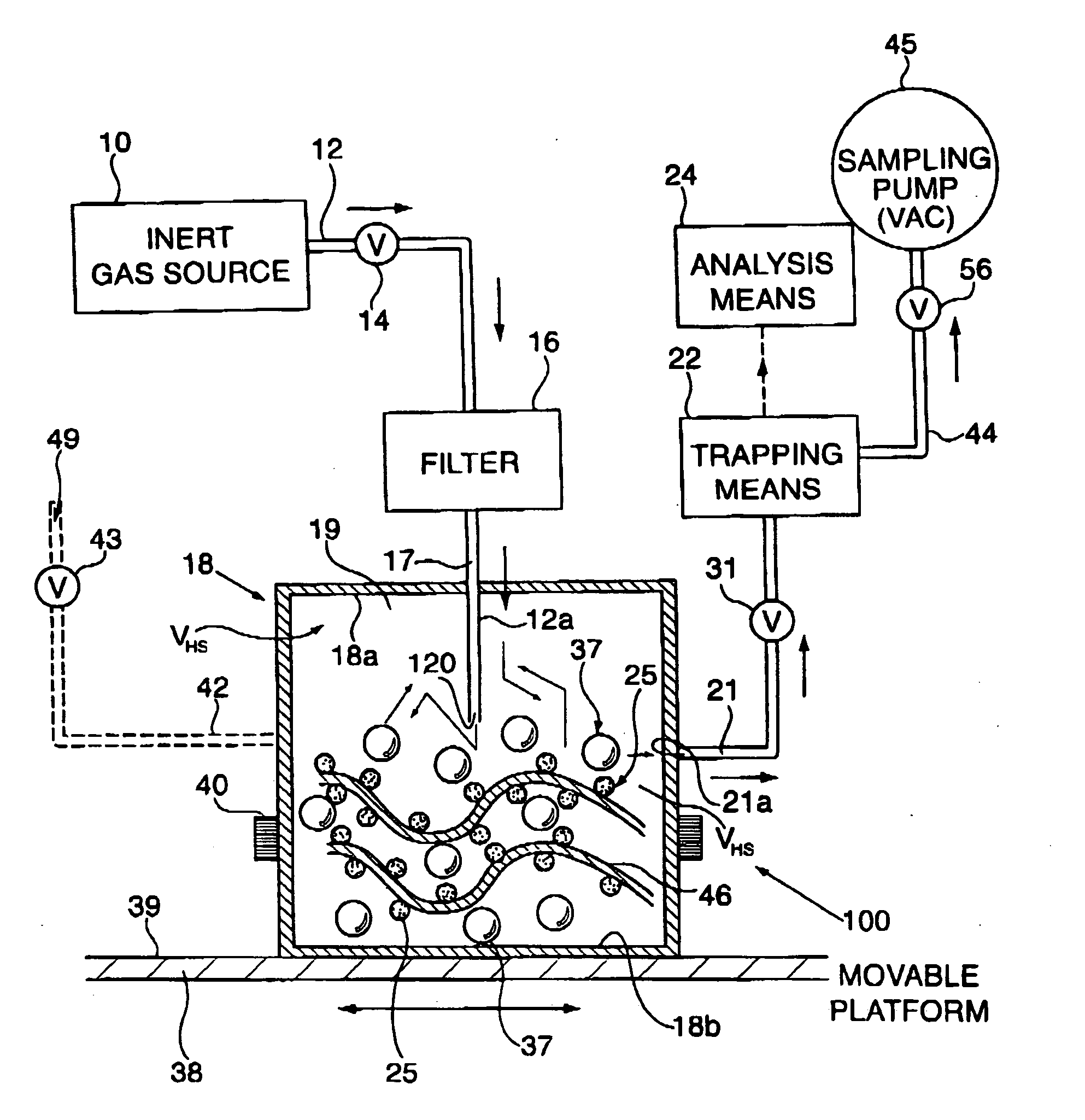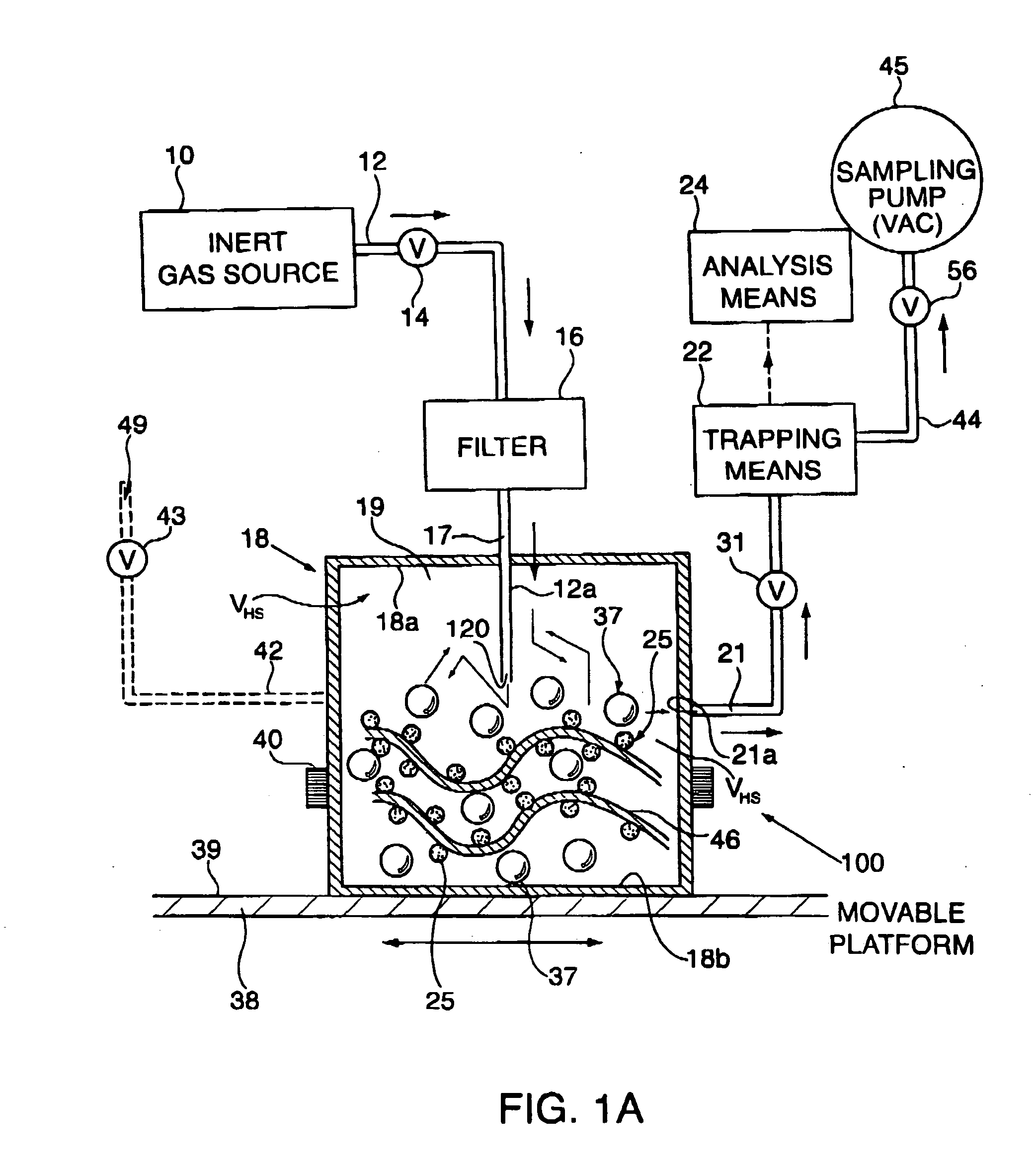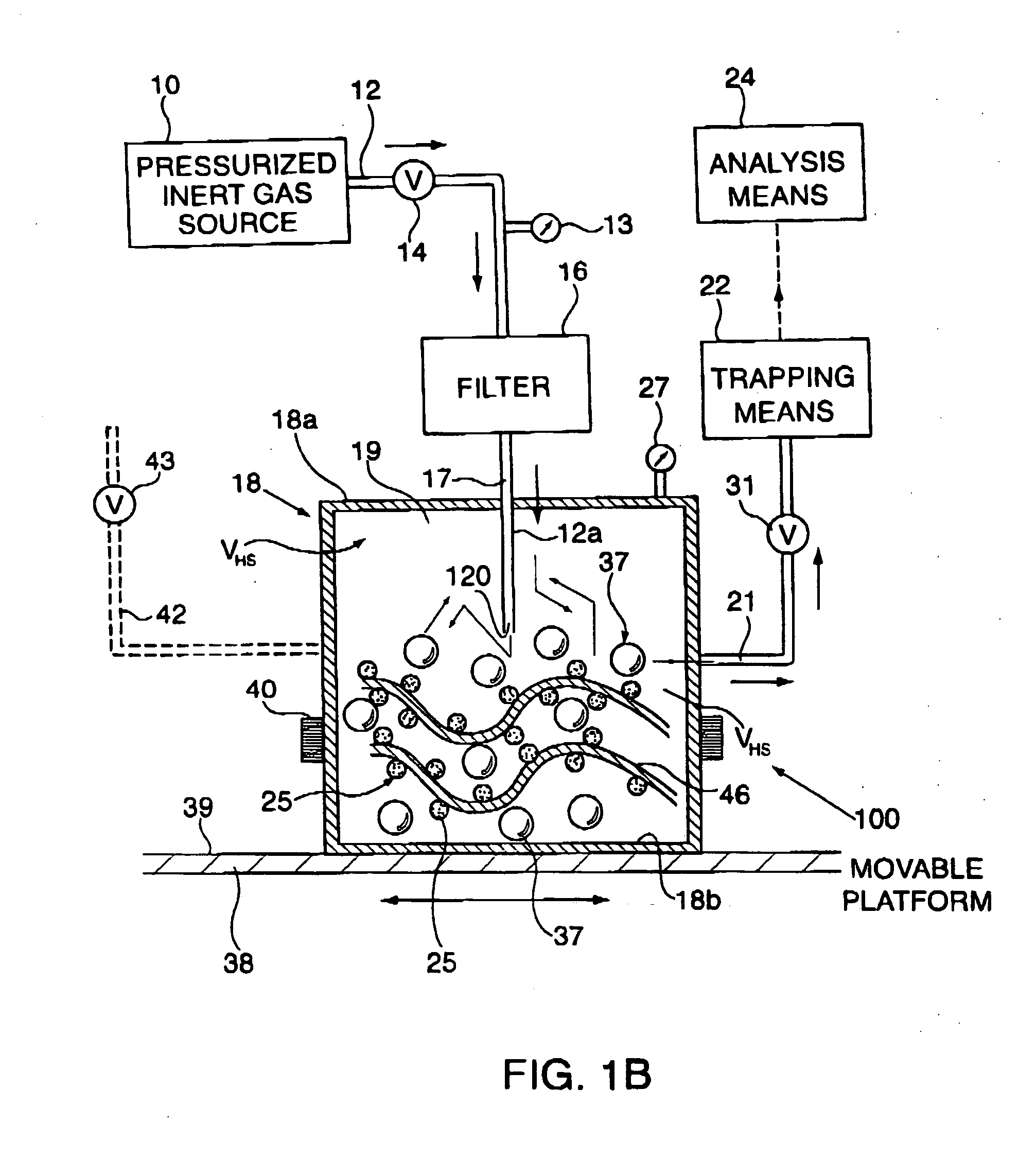Analysis of the headspace proximate a substrate surface containing fragrance-containing microcapsules
a fragrance composition and headspace technology, applied in the field of headspace analysis of microencapsulated fragrance compositions, can solve the problems of inferring or not disclosing any method or apparatus for qualitative and/or quantitative chemical analysis, and no prior art discloses or infers such a method or apparatus. effectual and efficient
- Summary
- Abstract
- Description
- Claims
- Application Information
AI Technical Summary
Benefits of technology
Problems solved by technology
Method used
Image
Examples
example a
[0085] The following fragrance composition was prepared:
MolecularParts byFragrance ComponentWeightWeightethyl undecylenate212.343.0geranyl anthranilate273.387.5α-irone206.336.3phenyl ethyl benzoate226.283.2d-limonene136.243.2cis-p-t-butylcyclohexyl acetat198.315.8amyl cinnamic aldehyde202.307.3hexyl cinnamic aldehyde216.3312.6hexyl salicylate222.2912.6
example b
[0086] 50 Parts by weight of the fragrance of Example A was admixed with 50 parts by weight of NEOBEE-M5 (Stepan Chemical Company of Northfield, Ill., U.S.A.), the triglyceride ester of a mixture of caprylic acid and capric acid uses as a solvent thereby forming a fragrance / solvent composition. In a homogenizer as illustrated in FIGS. 11-A and 11-B of U.S. Pat. No. 6,042,792, fragrance / solvent composition-containing microcapsules were prepared by interfacial polymerization of a microcapsule wall encapsulating fragrance / solvent composition droplets. To make the capsule slurry, a copolymer of acrylamide and acrylic acid was first dispersed in water together with a methylated melamine-formaldehyde pre-condensate having the structure:
wherein one of the R moieties represents methyl and the other of the R moieties represents hydrogen. These two components were allowed to react under acidic conditions. The fragrance / solvent composition was then added into the solution and droplets of th...
example c
[0087] The slurry of microcapsules of Example B was formulated into the following suspended microcapsule slurry described in the table below:
Parts byIngredientsWeightSlurry of Microcapsules of Example B0.30Water90.7SURCIDE P (hexahydro-1,3,5-tris(2-hydroxyethyl)-s-triazine0.10available from Surety Laboratories of North Wales,Pennsylvania, U.S.A.) preservativeTOMADOL 91-8 (Tomah Products, Inc. of Milton, Wisconsin,2.70U.S.A.)(Mixture of the hydroxy-octaethoxy ethers ofn-nonanol and n-undecanol) ionic surfactantXanthan gum (suspension agent)0.50Dimethyl silicone polymer having the formula:1.0(CH3)3SiO[(CH3)2SiO]6Si(CH3)2
[0088] In addition, an unconfined fragrance formulation was prepared containing the following ingredients:
Parts byIngredientsWeightFragrance formulation of Example A0.05Water93.00SURCIDE P (hexahydro-1,3,5-tris(2-hydroxyethyl)-s-triazine0.10available from Surety Laboratories of North Wales,Pennsylvania, U.S.A.) preservativeTOMADOL 91-8 (Tomah Products, Inc. of Milt...
PUM
| Property | Measurement | Unit |
|---|---|---|
| thickness | aaaaa | aaaaa |
| thickness | aaaaa | aaaaa |
| diameter | aaaaa | aaaaa |
Abstract
Description
Claims
Application Information
 Login to View More
Login to View More - R&D
- Intellectual Property
- Life Sciences
- Materials
- Tech Scout
- Unparalleled Data Quality
- Higher Quality Content
- 60% Fewer Hallucinations
Browse by: Latest US Patents, China's latest patents, Technical Efficacy Thesaurus, Application Domain, Technology Topic, Popular Technical Reports.
© 2025 PatSnap. All rights reserved.Legal|Privacy policy|Modern Slavery Act Transparency Statement|Sitemap|About US| Contact US: help@patsnap.com



